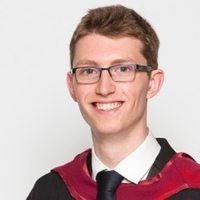Justin Turnbull
Cardiff University, School of Music, Graduate Student
- Bachelor of Arts in Music with First Class Honours from the University of Bristol.
Master of Arts in Music with Distinction from Cardiff University.edit
This was the second of two essays submitted for one of my first modules at Cardiff University.
Research Interests:
This essay concerns the early spectral music of Tristan Murail (b. 1947), and seeks to demonstrate an approach to the material that affords some of the subjective modes of time formulated by Jonathan D. Kramer. These modes of time can be... more
This essay concerns the early spectral music of Tristan Murail (b. 1947), and seeks to demonstrate an approach to the material that affords some of the subjective modes of time formulated by Jonathan D. Kramer. These modes of time can be understood as realisations of perceptual opportunities presented by the musical processes to the listener. To support this, the ecological approach to music perception put forward by Eric F. Clarke will be considered. In addition, it will be argued that two modes of ecology can be posited for this music: the first pertaining to the perceptual capacities o the listener, from which the subjective modes of time are experienced; the second pertaining to the perceptual capacities of the music logic itself, affording its own proliferation and development on a subatomic ecological scale.
Research Interests:
This dissertation concerns the role performed by ubiquitous soundware in music production, and situates a meta-theoretical critique of the musicological discipline from the position that standard analytical methods exhibit their... more
This dissertation concerns the role performed by ubiquitous soundware in music production, and situates a meta-theoretical critique of the musicological discipline from the position that standard analytical methods exhibit their limitations when assessing soundware. The terms upon which soundware can be considered musicologically are demonstrated through a discussion of three interrelated conceptual and theoretical paradigms: originality, postmodernism, and intertextuality. My case studies consist of music in which the use of soundware is audible, enabling critical engagement with respect to these paradigms. Stewart Copeland’s music for the video game Spyro 2: Gateway to Glimmer (1999), and the Copeland-inspired fan compositions by Zagir Fabarisov (MrModez), are shown to address notions of originality. James Ferraro’s Far Side Virtual (2011) and Oneohtrix Point Never’s R Plus Seven (2013) exhibit how soundware can be used critically through a postmodern gaze. Finally, connections can be drawn between these case study pairings that situate intertextuality as the theoretical means through which contrasting uses of soundware can be effectively considered in musicology.
Research Interests:
The first of two essays completed for one of my first modules at Cardiff University.
Research Interests:
This study seeks to determine the extent to which selected works by Olivier Messiaen (1908-1992), Pierre Boulez (1925-2016), and Tristan Murail (b. 1947) support or contradict the notion of “rupture” in the Parisian musical establishment... more
This study seeks to determine the extent to which selected works by Olivier Messiaen (1908-1992), Pierre Boulez (1925-2016), and Tristan Murail (b. 1947) support or contradict the notion of “rupture” in the Parisian musical establishment during the twentieth century. Aesthetic and political considerations of the historical narrative frame comparative analyses of Murail’s Territoires de l’oubli (1977) to the ethos of Messiaen’s Sept haïkaï (1962) and Couleurs de la cité celeste (1963), and to the technique of Boulez’s Structures II for two pianos (1956-61). It is concluded that Messiaen’s influence on Murail was largely one of ethos and not technique. It is determined that Boulez and Murail share similarities in their approaches to form and the manipulation of piano sonority and resonance. It is thus considered that their aesthetic divide is of little substance to the content of their music.
